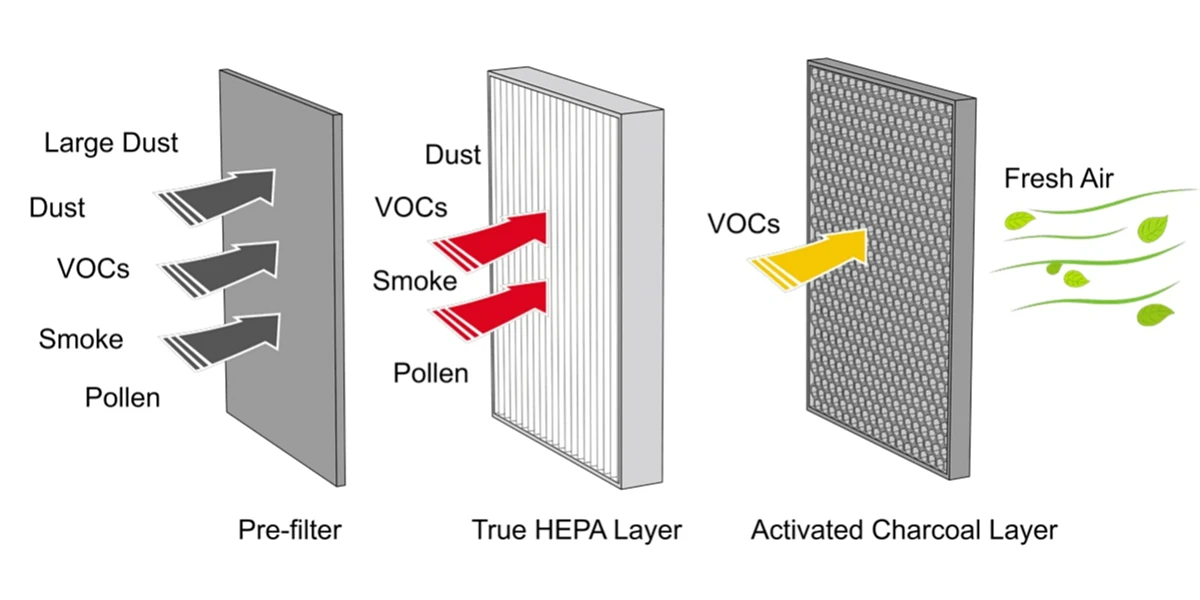A high efficiency particulate air (HEPA) filter can remove 99.97% - 99.99% of airborne particles that are equal to or larger than 0.3 microns in size. The efficiency is rated based on the worst level possible, so think about it as 99.97% or BETTER. The filters are tested using air particles that are 0.3 micron size as those are the most difficult size for a HEPA filter to catch. HEPA filters are actually more efficient at capturing smaller particles, like those the size of viruses (which on average are 0.1 microns) due to how these smaller size particles behave (see NASA research). This is based on MERV (minimum efficiency value rating) ratings as determined by the American Society of Heating, Refrigeration, and Air-Conditioning Engineers (ASHRAE).
A HEPA filter is not like any regular air filter you typically put in your house. HEPA filters are a pleated mechanical air filter that have a considerable thickness in order to capture the particulates. The pleats create a mat of fibers that are randomly arranged. The random, dense arrangement of fibers helps to catch a range of particle sizes. As air particles pass through the air filter, they are caught by three mechanisms: diffusion, interception, and impaction.

Diffusion occurs when the the gas molecules that are smaller than 0.1 micron in size collide with each other and are delayed in passing through the filter. The delay will make it more likely for the next two mechanisms to occur for those smaller particles. Interception is when particles moving along the air stick to a fiber. Impaction, the third mechanism, is when the larger air particles embed directly into the fibers themselves.

In an attempt to extend the usage life of a HEPA, a pre-filter can be included in the set-up which helps to remove the larger particles, leaving the finer particles to be caught by the HEPA. We know this at Fete Filter, and all of our commercial air purifier units that we offer come with MERV-8 pre-filters to extend the life of the HEPA filter that is within.
Although HEPA filters succeed in removing air particles, they are not effective at eliminating odors or noxious gases like volatile organic compounds (VOCs).







